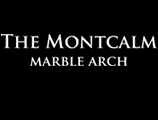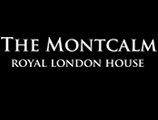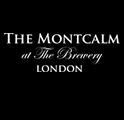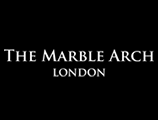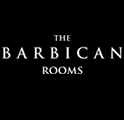The Houses of Parliament are without doubt one of the most famous spots in London, as well as the seat of the UK government. Yet while many people are familiar with the buildings which comprise parliament, only a few know much about the area’s history and traditions.
Here’s a quick look at a few houses of parliament fun facts, which should allow you to show off your local knowledge when next staying in the city!
Houses of Parliament Facts
The Houses of Parliament have another name
Whilst most people know this location as the Houses of Parliament, it has another name, and one which is actually far older than its current incarnation.
Once known better as the Palace of Westminster after it was built during the 11th century, the main building here was once a large royal palace. This original structure was badly damaged by a fire in 1512, and then completely destroyed by a subsequent fire in 1834. After this enduring damage, it was replaced with a more robust structure.
Medieval elements remain
Despite being largely rebuilt, there are a few parts of the Houses of Parliament which retain their medieval credentials. These include Westminster Hall, the Chapel of St Mary Undercroft, the Jewel Tower and the Cloisters of St Stephen’s all of which are now the oldest parts of the structure.
Designed after a competition
The new design of the Houses of Parliament was created by architect Charles Barry, who built it in a Gothic Revival style. This was based largely on the English Gothic style of prior centuries, and allowed Barry to retain and incorporate those areas which had survived the fire. The new palace was much larger than its original building, helping to create an imposing sight for guests at the Montcalm Chiswell Street.
Owned by the monarch
The Houses of Parliament are the official meeting place for parliament, but as the UK is a constitutional monarchy, they are technically owned by the reigning monarch. During ceremonial events, the venue also retains its original purpose as a royal residence, and the Queen plays a key role in events such as the State Opening of Parliament – traditions which stretch back many centuries.
Designed to respect traditions
While the Palace of Westminster is now home to modern government, it is also known for respecting traditions which stretch back many centuries. In the earliest days of parliament, figures attending would have brought their swords – as such, the venue still provides a place to hang these swords.
In addition, the floor in many of the rooms includes marking which are each approximately ‘two sword lengths’ away from one another; it is reputed this was intended to stop fights breaking out in the building.
Used for events
One of the largest rooms in the Houses of Parliament, the Royal Gallery is used for a number of key diplomatic events. This could include everything from dinners to ceremonies and special receptions.
Though this is not the case now, at one point in history it was also used to host trials.
Noted for its famous clock
One of the most important parts of the Houses of Parliament is its large clock, known as Big Ben. The clock is located in the Elizabeth Click Tower, and remains amongst London’s most famous sights – visible not only as a key part of the city skyline, but commonly used in memorabilia and mementos guests at a boutique hotel in London take home with them.
Decorating is symbolic
The two most famous rooms in the building, the Lord’s Chamber (home to the House of Lords) and the Commons Chamber (home to members of Parliament) are decorated in a highly symbolic style. The Lord’s Chamber is the most decorated room, with ornate carvings and bright red colours. The Commons Chamber however is a little less lavish, with its furnishings sources from various Commonwealth countries.
However, the Lord Speaker in the House of Lords is seated on a sack of wool – intended to represent the British wool trade.
Beware of the stairs
The Houses of Parliament have many staircases – more than 100 of them, in fact, as well as around three miles of corridors to explore. A trip here often requires people to travel up and down these narrow staircases to get to essential parts of the building, including the House of Commons viewing gallery.
Biggest medieval roof in England
Despite most of the medieval spaces being destroyed, the Hall of Westminster still has the largest medieval roof anywhere in England. Centuries ago, this is an area where England’s monarchs would have lived and worked. Today, it can be viewed by history-loving visitors to a boutique hotel in London.
Leisure services are available
While you might associate the Houses of Parliament only with government, it also offers a range of services like a lot of modern workplaces – mainly designed to help MPs feel more at home. These include an active hair salon, a shooting range and a gym.
Animals are banned
As you might expect from a building with a purpose as serious as the Houses of Parliament, there is a strict ban on all animals from entering the premises (with the exception of Guide Dogs). However, this certainly didn’t stop a large population of mice from once taking up residence, and this reportedly remains a problem to this day.
Site of The Gunpowder Plot
It’s far from a fun point in British history, but the Houses of Parliament were the staging ground for the Gunpowder Plot of 1605. This plot was a failed attempt to assassinate King James I, and represents a gruesome and bloody part of the country’s heritage. Key figures involved in the plot included Robert Catesby and Guy Fawkes.
The Houses of Parliament cover a huge distance
The structure which was developed to replace the original Palace of Westminster is noted for its large scale, with the buildings spanning around eight acres in total.
In addition, the Houses of Parliament also have more than 1000 rooms – helping to create a truly striking addition to London’s architectural sights. In addition, the area serves its vital administrative and legislative purpose, allowing elected officials to discuss the matters which concern Britain’s citizens, host debates and organise new legislature.
FAQs
-
How old are the Houses of Parliament?
The construction of 1,100 rooms houses of parliament was completed in 1870. However, the building required constant maintenance.
2. How many seats are there in Parliament?
The Commons is an elected body consisting of 650 members known as members of Parliament (MPs). Members are elected to represent constituencies by the first-past-the-post system and hold their seats until Parliament is dissolved. Read more
3. How old are the Houses of Parliament?
The current building, designed by architects Charles Barry and Augustus Pugin was started after the fire destroyed the old Palace of Westminster in 1834. The construction was completed by 1870.
4. How big are the Houses of Parliament?
The measurements of the houses are as follows:
- House of Lords – 97 feet
- Commons – 70 feet
- The Southwestern Victoria Tower – 336 feet
- Elizabeth Tower – 320 feet




















